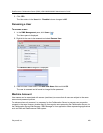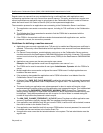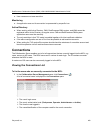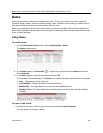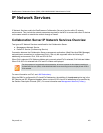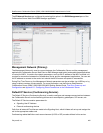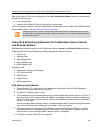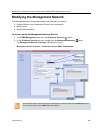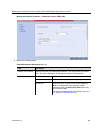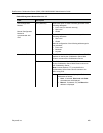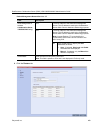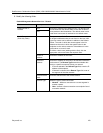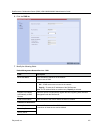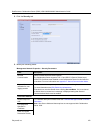
RealPresence Collaboration Server (RMX) 1500/1800/2000/4000 Administrator’s Guide
Polycom®, Inc. 465
Most of the Default IP Service is configured by the Fast Configuration Wizard, which runs automatically
should the following occur:
● First time power-up.
● Deletion of the Default IP Service, followed by a system reset.
For more information, see the Polycom® RealPresence Collaboration Server (RMX) 1500/1800/2000/4000
Getting Started Guide, First Entry Power-up and Configuration
Using IPv6 Networking Addresses for Collaboration Server Internal
and External Entities
IPv6 addresses can be assigned to both Collaboration Server (Internal) and External Entity addresses.
Collaboration Server Internal Addresses (Default Management Network Service):
● Control Unit
● Signaling Host
● Shelf Management
● MPM1 (Media Card)
● MPM2 (Media Card)
External Entities:
● Gatekeepers (Primary & Secondary)
● SIP Proxies on EMA
● DNS Servers
● Default Router
● Defined participants
IPv6 Addressing Guidelines
● Internet Explorer 7™ is required for the Collaboration Server Web Client and RMX Manager to
connect to the Collaboration Server using IPv6.
● The default IP address version is IPv4.
● The IP address field in the Address Book entry for a defined participant can be either IPv4 or IPv6. A
participant with an IPv4 address cannot be added to an ongoing conference while the Collaboration
Server is in IPv6 mode nor can a participant with an IPv6 address be added while the Collaboration
Server is in IPv4 mode.
An error message, Bad IP address version, is displayed and the New Participant dialog box remains
open so that the participant’s address can be entered in the correct format.
● Participants that do not use the same IP address version as the Collaboration Server in ongoing
conferences launched from Meeting Rooms, Reservations and Conference Templates, and are
disconnected. An error message, Bad IP address version, is displayed.
● IP Security Protocols (IPSec) are not supported.
Changes made to any of these parameters only take effect when the Collaboration Server is reset.
An Active Alarm is created when changes made to the system have not yet been implemented and
the MCU must be reset.




